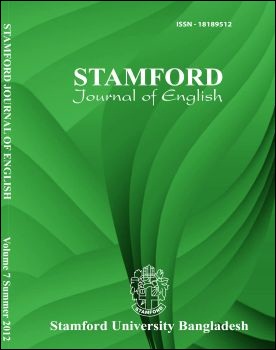Influence of Doraemon on Bangladeshi Children: A CDA perspective
DOI:
https://doi.org/10.3329/sje.v7i0.14474Keywords:
Influence, Doraemon, Bangladeshi Children, CDA perspectiveAbstract
Cartoon series are basically for the childrens entertainment. Sometimes not only the children but also the adults enjoy cartoon series. According to Waiming (2002), Doraemon is now a popular culture in Japan. It is so much popular that Disney channel is telecasting this series in Hindi language. This paper is a critical discourse analysis of how a Japanese anime of Hindi language is embedding Hindi language into the Bangladeshi children of age 3 to 8 years. This paper discusses the reasons for the exercise of Hindi language by the Bangladeshi children and the use of Hindi language instead of English after watching Doraemon. These little children are using Hindi words with Bangla language. This sort of use of Hindi language is actually a way of dominating Bangla language, and a reason for linguistic imperialism. This paper also discusses how Doraemon has cultural effects in Bangladesh. For data collection, 500 children and 100 families were interviewed from the urban area of Bangladesh. Theoretical framework is done on Saussures Semiotics theory, and Phillipsons (1992) language and cultural imperialism theory. From this data, it is found out that the children of Bangladesh are using Hindi Language mostly. They prefer to talk in Hindi than English language. Parents are facing social problems also
DOI: http://dx.doi.org/10.3329/sje.v7i0.14474
Stamford Journal of English; Volume 7; Page 204-217
Downloads
1047
1544

